The mysterious metal, Orichalcum
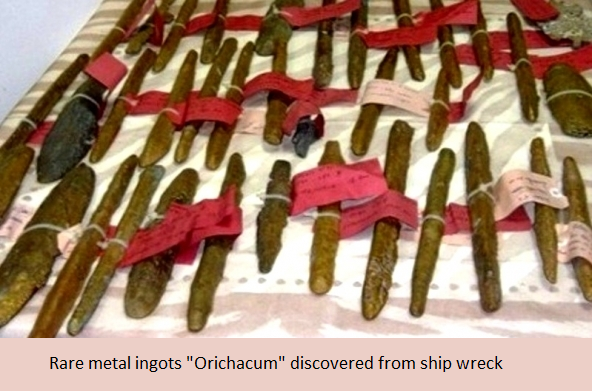
 The mysterious metal, Orichalcum
The mysterious metal, Orichalcum
Orichalcum or aurichalcum is a metal mentioned in several ancient writings, including a story of Atlantis in the Critias dialogue, recorded by Plato. According to Critias, orichalcum was considered second only to gold in value, and was found and mined in many parts of Atlantis in ancient times. By the time of Critias, however, it was known only by name.
In n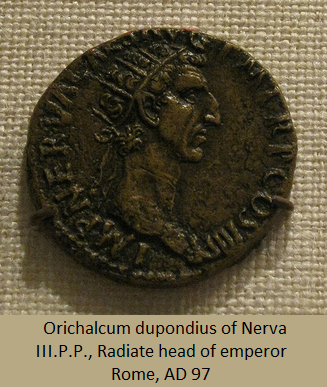
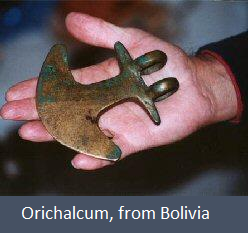 umismatics, orichalcum is the golden-colored bronze alloy used for the sestertius and dupondius coins. In many sources of pop culture, such as novels and video games, orichalcum is presented as a valuable ore that can be mined and crafted into powerful armor and weapons. Wikipedia
umismatics, orichalcum is the golden-colored bronze alloy used for the sestertius and dupondius coins. In many sources of pop culture, such as novels and video games, orichalcum is presented as a valuable ore that can be mined and crafted into powerful armor and weapons. Wikipedia
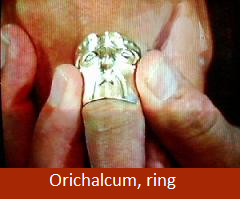 Today most scholars agree orichalcum is a brass-like alloy, which was made in antiquity by cementation. This process was achieved with the reaction of zinc ore, charcoal and copper metal in a crucible. Analysis has shown they are an alloy of copper, zinc, lead, iron and nickel. Orichalcum has been described as white or gold in color and also referred to as copper. The combination of those metals found in the alloy in that wreck does not match the description of Atlantean orichalcum. There are many metal types including contaminated Bronze that has been labeled Orichalcumm so an exact formula if what Plato described is difficult for the novice to pin-point.
Today most scholars agree orichalcum is a brass-like alloy, which was made in antiquity by cementation. This process was achieved with the reaction of zinc ore, charcoal and copper metal in a crucible. Analysis has shown they are an alloy of copper, zinc, lead, iron and nickel. Orichalcum has been described as white or gold in color and also referred to as copper. The combination of those metals found in the alloy in that wreck does not match the description of Atlantean orichalcum. There are many metal types including contaminated Bronze that has been labeled Orichalcumm so an exact formula if what Plato described is difficult for the novice to pin-point.
Orichalcum
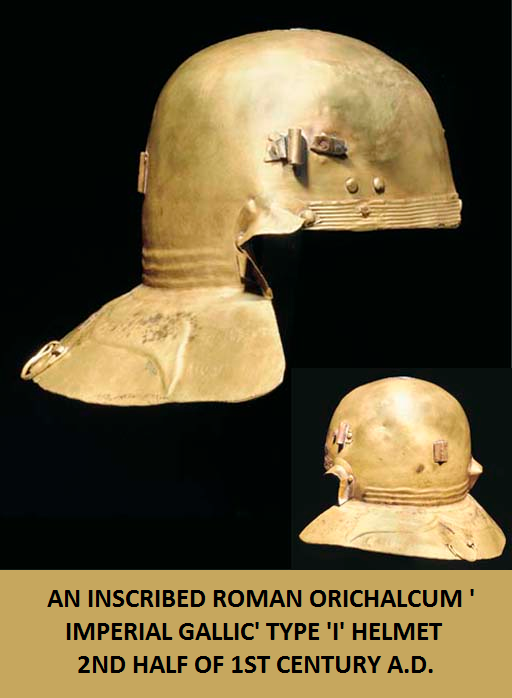 Analyzed with X-ray fluorescence by Dario Panetta, of TQ – Tecnologies for Quality, the 39 ingots turned to be an alloy made with 75-80 percent copper, 15-20 percent zinc and small percentages of nickel, lead and iron.
Analyzed with X-ray fluorescence by Dario Panetta, of TQ – Tecnologies for Quality, the 39 ingots turned to be an alloy made with 75-80 percent copper, 15-20 percent zinc and small percentages of nickel, lead and iron.
“The finding confirms that about a century after its foundation in 689 B.C., Gela grew to become a wealthy city with artisan workshops specialized in the production of prized artifacts,” Tusa said.
The 39 ingots recovered from the wreck were indeed destined to these workshops and were used in high quality decorations. Discovery News
This alloy was a product of metallurgy beyond the knowledge of the greeks at the time, and the methods kept secret on the metallurgist’s behalf.
- Orichalcum is first mentioned in the 7th century BC by Hesiod and in the Homeric hymn dedicated to Aphrodite, dated to the 630s.
- According to the Critias by Plato, the three outer walls of the Temple to Poseidon and Cleito on Atlantis were clad respectively with brass, tin, and the third, which encompassed the whole citadel, “flashed with the red light of orichalcum”. The interior walls, pillars and floors of the temple were completely covered in orichalcum, and the roof was variegated with gold, silver, and orichalcum. In the center of the temple stood a pillar of orichalcum, on which the laws of Poseidon and records of the first son princes of Poseidon were inscribed. (Crit. 116–119)
- In Vergil‘s Aeneid it was mentioned that the breastplate of Turnus was “stiff with gold and white orachalc”.
- It is known from the writings of Cicero that the metal they called orichalcum, while it resembled gold in colour, had a much lower value.
- Orichalcum is also mentioned in the Antiquities of the Jews – Book VIII, sect. 88 by Josephus, who stated that the vessels in the Temple of Solomon were made of orichalcum (or a bronze that was like gold in beauty).
- Pliny the Elder points out that the metal has lost currency due to the mines being exhausted.
- Pseudo-Aristotle in De mirabilibus auscultationibus describes orichalcum as a shining metal obtained during the smelting of copper with the addition of “calmia,” a kind of earth formerly found on the shores of the Black Sea.
X-ray fluorescence analysis of 39 ingots suspected to be orichalcum, recovered from a 2,600 year old shipwreck off Sicily, found them to be a brass alloy made with 75-80 percent copper, 15-20 percent zinc and small percentages of nickel, lead and iron
http://news.discovery.com/history/archaeology/atlantis-legendary-metal-found-in-shipwreck-150106.htm
http://www.archaeology.org/news/2874-150107-sicily-orichalcum-metal
Nicholas F. Zhirov. Atlantis: Atlantology: Basic Problems. The Minerva Group, Inc, 2001. ISBN 0-89875-591-3
The Baghdad Battery is believed to be about 2000 years old The jar was found in Khujut Rabu just outside Baghdad and is composed of a clay jar with a stopper made of asphalt. Sticking through the asphalt is an iron rod surrounded by a copper cylinder. When filled with vinegar – orany other electrolytic solution –
The Orichalcum rods are very similar and may in fact be a more powerful rod than just simply a copper rod. This is possibly a shipment of battery rods for electrical batteries. Testing the conductivity with Orichalcum compared to copper has not been done. Orichalcum is a form of Bronze that is corrosive resistant,
~Chris L Lesley
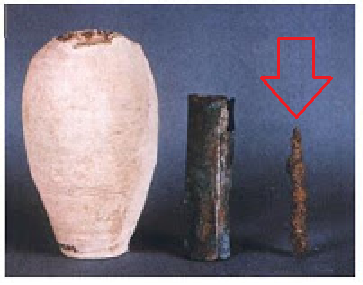
This was the most informative, and easy to read, paper I have read on the web concerning the fascinating history of orichalcum. The references you give us will help greatly, it makes further research simple. Thank you Chris